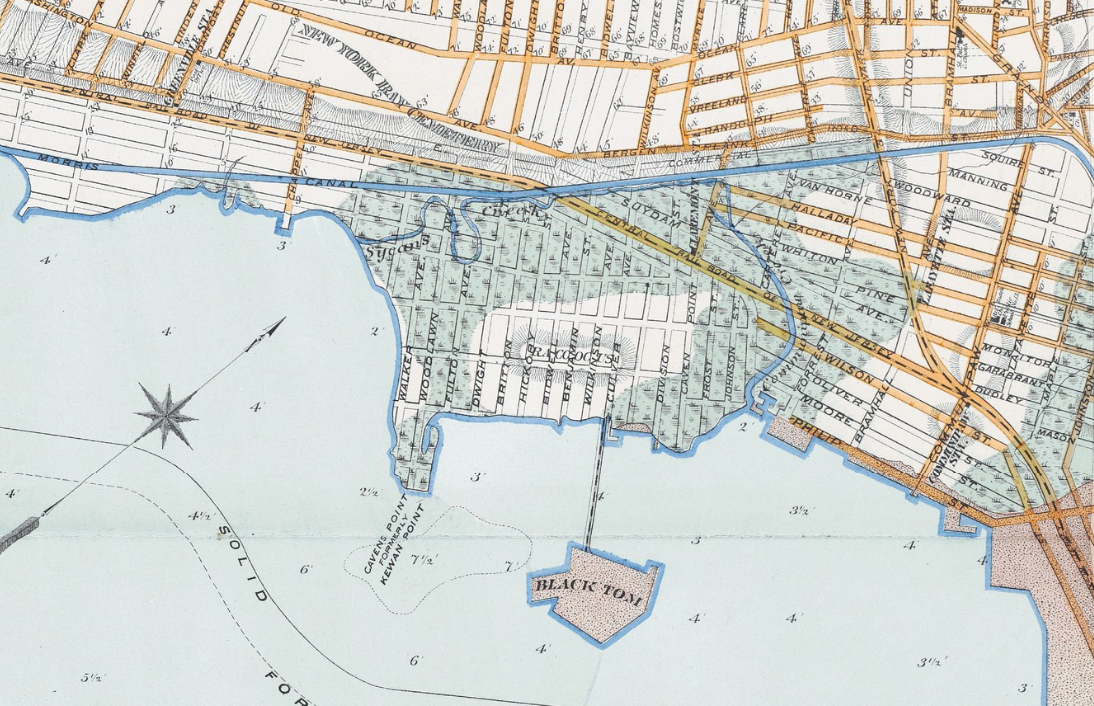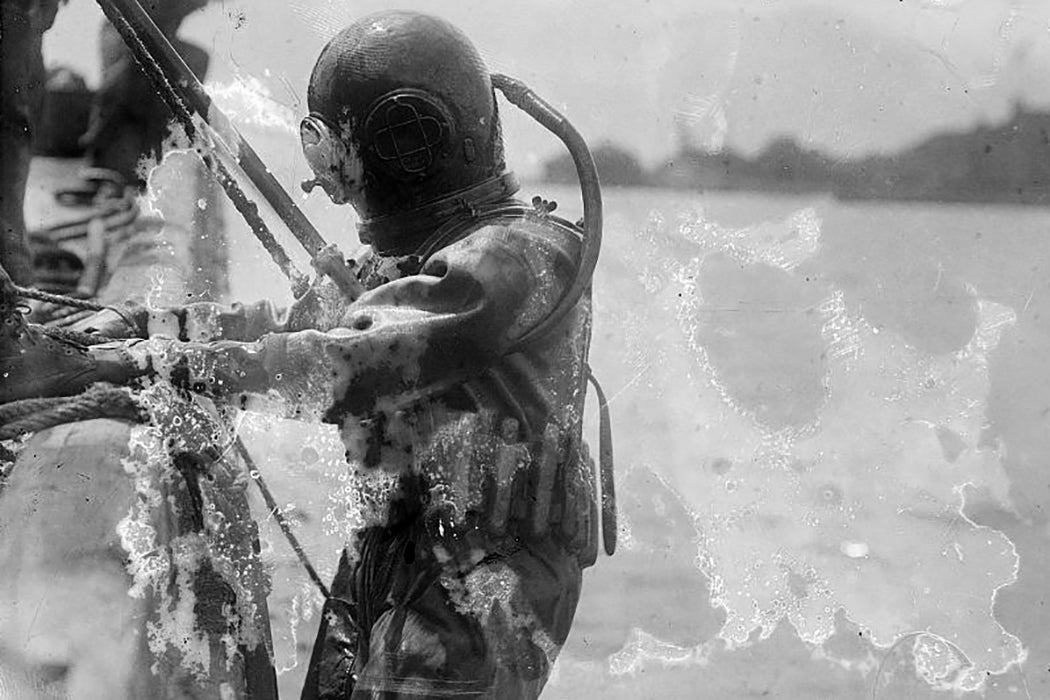The Black Tom explosion of July 30th, 1916, was so large it could be felt in Philadelphia, ninety miles away. The act of sabotage was the largest enemy attack on continental American soil prior to 9/11.
Black Tom was an island off of Jersey City, New Jersey—its remains are now joined by landfill to the mainland of Liberty State Park. On the night of July 30th, the terminal there housed an enormous munitions stockpile awaiting shipment to Russia. The massive explosion damaged the nearby Statue of Liberty; the statue’s torch has been closed to the public ever since.
German agents were ultimately found to be the culprits. Of course, in 1916, the United States was still neutral. But Imperial Germany understood that the munitions were destined for the allies fighting against them. The German espionage operation in the U.S. and elsewhere teamed up with Irish nationalists and Indian nationalists fighting anti-colonial independence struggles against the United Kingdom.
The Indian exile/immigrant population in the U.S. was infinitely smaller than the Irish, but individuals on both sides formulated an Indo-Irish alliance before the war and continued it afterwards. (By coincidence, India’s independence and Ireland’s declaration of itself as a republic happened within a year of each other.) According to scholar Matthew Erin Plowman, the Germans saw the pre-existing network as something to tap into and exploit. They don’t seem to have realized that British intelligence had already infiltrated the network from the Irish side.
The Black Tom attack was part of a larger, synergistic puzzle of disparate nationalist movements and German realpolitik. Wartime alliances, Plowman notes, are often “based on the expediency of power rather than the pillars of ideology.”

Plowman’s description befits a thriller: “British spies, Irish republicans, private detectives, American Bureau of Investigation (BOI) agents, German operatives, and Indian revolutionaries were all linked in a cloak-and-dagger tale.” In April of 1918, Irish-American lawyers defended the Indo-German conspirators during the so-called “Hindu-German Conspiracy” trial in San Francisco. British agents aided the U.S. Attorney’s office. A British mole in the Irish organization provided many of the details of the connections between the tripartite members of the conspiracy, although mention of Irish involvement was downplayed by the prosecution (who also tried keep nationalist Irish-Americans off the jury). Over two dozen “Indian nationals, German consular officers, and Indo-, German, and Irish Americans” were found guilty of conspiring to violate neutrality laws.
Joan M. Jensen provides more details about the prosecution, noting that by calling it a “Hindu conspiracy” the government was attempting to discredit the Indians in two ways. “Hindu was a common term of opprobrium in early twentieth-century America and used to identify all East Indians regardless of their religion.” Additionally, the legal uses of “conspiracy” were highly loaded, having been used in the U.S. in the nineteenth century to attack labor unions and in the twentieth “to hinder the activities of political groups.”
The trial itself was most infamous for being punctuated by the courtroom assassination of Ram Chandra, editor of the Indian nationalist paper Gadar, by co-conspirator Ram Singh in front of the judge and jury. Singh, who was shot dead on the spot by a marshal, seems to have believed Chandra had compromised the movement.
Plowman notes that it’s a historical irony that “idealistic and often socialist nationalists of Ireland and India turned to the autocratic imperialists of Germany for help against the British Empire.” Also ironic was the “the democratic United States, while alleging to be the harbinger of Wilsonian self-determination, turned against these nationalists in favor of the same British Empire from which it had also rebelled and seceded.”







